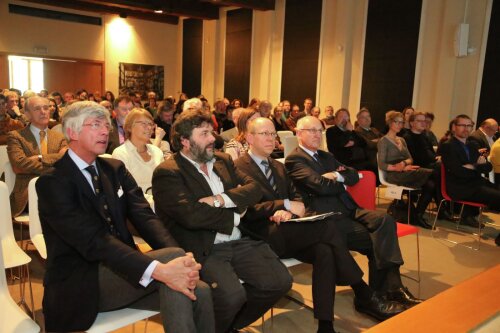The official inauguration of the new chair took place on Thursday 27th February 2015 in the presence of 150 museum professionals, students, scholars and academics. Thanks to the hospitality of Ben Van Beneden (curator of the Rubens house) and Veronique Van de Kerckhof (director of the Rubenianum), both the inauguratory lessons and the reception were held in the Rubenianum.
These surroundings were particularly suited to this event as the news of the spectacular discovery on Rubens' Pelsken were released to the press on that same day. The results of the MA-XRF experiment on this famous portrait of Rubens' second wife were presented during the exhibition 'Rubens in private' in the neighbouring Rubens House. In addition, prof. Katlijne Van der Stighelen elaborated on the art historical interpretation of the finding of the fountain during the inaugural session. More information on this project in collaboration with researchers of the Kunsthistorisches Museum can be found here. Apart from that, Dr. Griet Steyaert, one of the conservators of Van Eyck's Ghent Altarpiece, explained how MA-XRF scanning contributed to the treatment of the reverse panels. More information on this topic can be found here.

Program
Prof. dr. Koen Janssens, University of Antwerp, Faculty of Sciences, Department of Chemistry
Welcome speech and introduction
Prof. dr. Johan Meeusen, Vice-Rector of the University of Antwerp,
The Antwerp University fund
Baron Jan Huyghebaert, president of the Inbev-Baillet Latour Fund
The activities of the Inbev-Baillet Latour Fund
Prof. dr. Katlijne Van der Stighelen, KU Leuven, Faculty of Arts, Early modern arts
Imaging as an ally: Pieter Paul Rubens and Antoon van Dyck investigated
Dr. Griet Steyaert, Conservation studio of the KIK-IRPA
Imaging as a tool during the conservation treatment of the Ghent altar piece
Dr. G. Van der Snickt, University of Antwerp, Mandatory of the Chair
Spectroscopic Imaging techniques: the missing link between cultural heritage and natural sciences